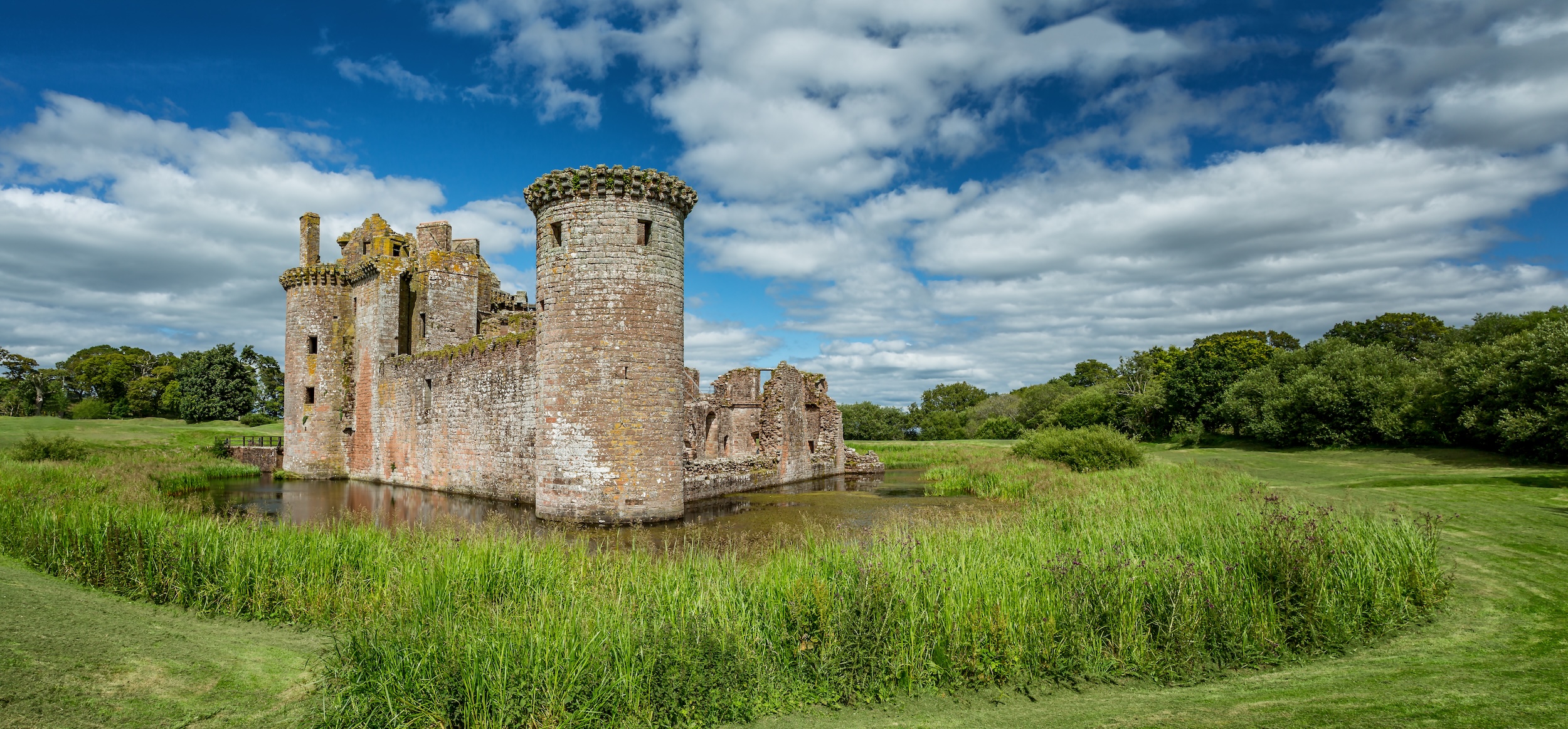
History and Culture
Situated near the English – Scottish border, Dumfries and Galloway has seen its fair share of activity over the years This has resulted in an abundance of castles, museums, relics and more, all waiting for you to explore. Whether you like museums, art galleries, ruins, or castles, there’s something for all ages. We’ve lists a few of our favourites below. Be sure to check your “manage my booking” for extra ideas and inspiration.
Admire this red-sandstone ruin and learn more about the famous history behind it. The abbey was founded in the late 13th century by Lady Devorgilla of Galloway in memory of her deceased husband Lord John Balloil. Lady Devorgilla was known to carry her deceased husband’s embalmed heart around with her in an ivory casket until her own death, after which she and the casket were buried together in the abbey. The monks then decided to rename the abbey in honour of this act of love – it is thought that this was the origin of the word ‘sweetheart’. The site has free parking, a small gift shop and is dog friendly; it is situated next to the Abbey Cottage Tearoom. Opening times for the abbey vary during the winter and summer months.
Visit website
Spend a day exploring 600 years of family history in this 90,000 acre estate and 120-room castle! Along with tours of the castle and gardens, you can enjoy walks through the estate, mountain biking & cycling trails, salmon fishing, Land Rover tours and an adventure playground. Explore the gift shop and have a snack in the tea room. The castle and/or gardens and estate are closed at certain times of year, it is advisable to check these dates before you plan to visit to avoid disappointment.
Visit website
This 30m high tower house was built in the late 14th century on an island in the middle of the River Dee and is only accessible by boat. Children especially enjoy ringing the bell to summon the boatman to come and help you with your journey across the water. There are plenty of nice long walks around the castle, and at certain times of year you will be able to spot the nesting ospreys. Due to the steep steps inside the castle and rough terrain on the path to the site, this would not be suitable for those in wheelchairs or with poor mobility.
Visit website
This is known as one of Scotland’s great medieval fortresses, with its unique triangular shape and moat. You can learn about the castle’s role in the border conflicts and explore the nearby nature trails. Kids can enjoy taking part in special quizzes, interactive displays and even dressing up before exploring the castle-themed adventure park. If you time it right you might catch some battle re-enactments and jousting! Dogs are welcome.
Visit website
A special opportunity to visit the first Tibetan Buddhist centre to be built in the West. Founded in 1967, the Samye Ling Monastery is a large centre focused on preserving the Tibetan culture and running residential retreats. Even non-religious people find comfort in a visit to the Temple or a walk around the Peace Gardens. There is also a shop and Tibetan tea room on site. There is no smoking, consumption of alcohol or of non-prescription drugs allowed on site and it is requested that pets are not brought, in order to protect the many small wild animals on the grounds.
Visit website
Based in and around the original wartime RAF Dumfries control tower, the museum features 3 floors of exhibits including engines, uniforms & weaponry. Outside you can explore the various aircraft including a Spitfire & Wessex helicopter. Pets are welcome.
Visit website
Located in the centre of Dumfries, this small museum offers free entry and will tell you the story of Burns’ time in the town, you can view many items belonging to The Bard including original manuscripts. There is also a cafe and gift shop and the centre turns into a film theatre at night.
Visit website
Find out about the history of the region and get a bird’s eye view of the town today. Installed in 1836, this camera obscura is the oldest working instrument of its kind in the world, it is closed between the start of October and the end of March and is only accessible via a spiral staircase which may not be suitable for all. Entry to the museum is free.
Visit website
Containing a treasure trove of items including vintage toys and foods, you could easily spend a couple of hours finding out about the town’s granite quarrying past as well as its links to the Titanic! Open from April to October, entry is free, although donations are always greatly appreciated!
Visit website
A fun and informative day out for the whole family, there is lots to do and see here – from gemstones to crystals, minerals and fossils! You can visit the crystal cave, explore the interactive displays and take part in the geology quiz. There is also a Heritage Centre, playpark, shop, tearoom and walks, but don’t worry if you can’t fit it all into one day – tickets are valid for 2 weeks!
Visit website
No, not your breakfast cereal! Discover the story of the greatest munitions factory on earth – HM Factory Gretna. During WW1 this factory made more explosives than all other munitions factories in the UK combined, had 30,000 workers and was over 9 miles long!
Visit website
See where Burns lived for his last years, you can view original manuscripts & other personal belongings and explore his study which still homes his writing desk and chair. Entry is free, with a museum trail and colouring sheets provided for the kids.
Visit website



